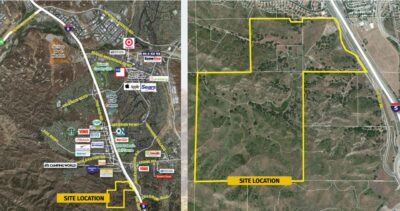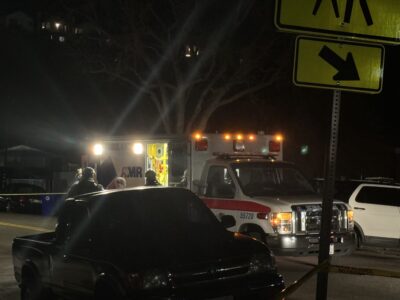Santa Clarita Mayor Bill Miranda has called for a controversial Main Street condo plan to head back to the Planning Commission, after city staff said the plan was going to the City Council for an amended approval after the council’s summer recess.
With a 3-0 vote May 13, the City Council approved The Hartwell, a “full-block development” of 78 condos on top of 5,200 square feet of retail, where Main Street, Market Street and Railroad Avenue meet.
Now a new plan submitted in June is going to bring it back before the Santa Clarita City Council, according to the city’s Planning Division.
Miranda, in a recent interview, said his opinion was that the changes in the plans should send the project back to the Planning Commission first, giving the commissioners a chance to study and then, if needed, send it back to the council.
“They’ve made a major change to the project,” he said, referring to the now-proposed demolition of a local radio station’s Main Street home. “There’s a building that was there and now isn’t there anymore, right?”
City officials have not yet determined a date for when the project would once again be subject to City Council review.
The biggest change to the plan is the addition of another property to the project. The owners of KHTS, a local radio station just feet away from the project’s original border on Main Street, were going to receive funds to mitigate construction noise. They announced their support of the deal in May.
In June, they came to terms with the developer of The Hartwell to sell their property at 24320 Main St., which is now expected to add 20 more condos to the project.
The Goldmans confirmed the terms, but also that everything would be dependent upon the project’s approval.
That proposal is going back to the council for consideration of an amended approval, according to Jason Crawford, director of community development.
The plans submitted for an entitlement in June did not state whether the commercial footprint of the project would be impacted.
Project concerns
There were several complaints about the project, which was hailed by proponents as a long-overdue realization of the city’s decades-old plan for the revitalization of its downtown.
The opposition decried the circumstances surrounding the negotiation, with Mayor Pro Tem Laurene Weste, a Santa Clarita Valley Historical Society board member, saying she negotiated on behalf of the city for the developer to pay $750,000 for historic preservation.
That money was later stripped from the deal in favor of $300,000 for a Newhall parking garage, after Weste recused herself from the discussion.
The historic preservation was supposedly to help save historic elements of the courthouse, which is slated for demolition in the project.
The former site of the Santa Clarita Courthouse on Railroad Avenue was built almost 100 years ago, its second floor made of lumber from the nearby Hap-A-Lan Dance Hall, the community hot spot in the 1920s. It was later repurposed as a morgue after the San Francisquito Dam disaster.
The SCV Historical Society wrote a letter stating work on the building over the years, particularly in the 1960s, has severely compromised its historical significance, part of the justification in the city staff recommendation to allow demolition of the building.
Right after the project’s approval, photos of the building circulated online that raised questions on how much history is left in the building. One showed twisted steel bars that appear to have been plastered over.
Leon Worden, a local historian with longtime involvement in the Historical Society and the city’s public television station, said he was happy to hear the city called for a Historic American Buildings Survey, or HABS, report as a condition of the project it approved in May.
He guessed that the bars seen in the pictures were likely put up in a later remodel, although that would be part of the information that comes out in a study. He acknowledged that “we don’t know what we don’t know,” despite the letter declaring the building didn’t have historical significance.
HABS aims to document America’s architectural heritage, especially when buildings are at risk of being lost or altered, according to a website for the program.
The survey should “hopefully determine the age and use of some of the building’s incidental features, such as the bars you see on some of the windows,” Worden said, maintaining the group’s contention that the building’s history is just that.
“All the recognizable courthouse features were gone long ago. We always like to learn new information,” he added. “A good HABS report could be informative. I’d love to see HABS surveys done on lots of buildings in town, but that’s a function of desire and money.”








